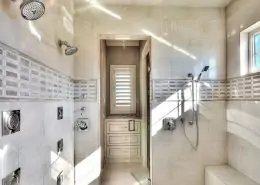How To Build a Kitchen Island Project with Base Cabinets
Tags
Kitchen Island | Kitchen Island Cabinets | How To Build a Kitchen Island
When it comes tokitchen renovation the possibilities are boundless. One creative and budget-friendly approach to elevate both the functionality and aesthetics of your kitchen is crafting your very own kitchen island using base cabinets.
This DIY endeavor empowers you to customize your island according to your unique requirements, regardless of your kitchen’s size, style, or layout.
We will take you through the steps to transform base cabinets into a stunning kitchen island, one that not only augments your storage space but also becomes the heart of your home.
Selecting the Right Base Cabinets is the Key…
The foundation of any kitchen island project begins with choosing robust base cabinets. Opt for cabinets constructed from durable materials like fiberwood or solid wood.
Steer clear of cabinets with cardboard backs, as they lack the durability necessary for this purpose.
Benefits of a Kitchen Island
Before delving into the construction process, it’s crucial to grasp how a kitchen island can elevate your cooking and dining experiences:
Additional Storage: A kitchen island provides extra cabinet space for your cooking tools and utensils, making them readily accessible during meal preparation.
More Workspace: Enjoy additional countertop space for food preparation, giving you room to spread out ingredients and cook efficiently.
Enhanced Socialization: In open floor plans, a kitchen island defines the space and becomes the focal point. It allows hosts to engage with guests or family members while preparing meals.
Entertainment Hub: Your kitchen island can also serve as a platform for cooking demonstrations, live cooking sessions with friends, or even vlogging, complete with some background music.Dining Area: With the right overhang, your kitchen island doubles as an ideal spot for casual dining, making it a versatile addition to your home.
Tools and Materials You’ll Need
| Tools and Materials | 8. Tape measure |
| 1. Base cabinets for the kitchen | 9. Pencil |
| 2. Drill and screwdriver bits | 10. Circular saw |
| 3. Wood glue | 11. Trim-head screws for wood |
| 4. Drill bits for pilot holes | 12. Butcher block slab for countertop |
| 5. Clamps | 13. Sandpaper with varying grits |
| 6. Screws for wood | |
| 7. 2×4 board (8 feet long) |
Note: Before commencing any construction work, ensure your safety by turning off water lines, gas lines, and electrical circuit breakers. If you’re uncertain about how to do this, seek assistance from your utility company or a Kitchen remodeler in Houston, TX.
Read Also: 5 THINGS TO LOOK FOR WHEN HIRING A HOUSTON REMODELER
Step-by-Step Guide- How to Build a Kitchen Island
Step 1: Determine Island Placement and Size
Commence by defining the placement and size of your kitchen island. Leave at least 42-48 inches of space around the island for easy movement.
If your kitchen permits, 48 inches is ideal. Ensure there’s a minimum of 36 inches of clearance on all sides; otherwise, the island’s aisle will be too cramped.
Pro Tip: To accommodate a 42-inch pathway, you’ll need 108 inches of space width. Add 12 more inches if you plan to include seating on one side. Adjust the island’s length by combining various cabinet sizes.
Step 2: Connecting the Cabinets
With the foundation and layout of your kitchen island established, it’s time to delve into the intricate process of connecting the base cabinets. This step forms the backbone of your island’s structural integrity.

- Begin by placing the cabinets back-to-back on a flat surface. To ensure a strong bond, run a line of wood glue along the top, bottom, and side edges of one cabinet.
- When positioning the cabinets together, align their sides and tops meticulously. Use clamps to firmly hold the cabinet tops in place, and drill pilot holes about 3/4 inch below the top edges. Secure them together using wood screws, forming the initial connection.
- Next, flip the connected cabinets over and align their sides once more. Clamp them together and secure them with screws, this time 1 to 2 inches from the bottom.
- Allow the wood glue to dry thoroughly for a full day. This comprehensive bonding process ensures that your base cabinets become a single, stable unit ready to support the forthcoming stages of your kitchen island project.
Step 3: Attaching the Base Cabinets
With the cabinet assembly prepared, it’s time to establish a secure connection to the floor.
- Measure the width of each cabinet’s base to determine the length of the cleats needed. Cut two 2×4 lumber pieces to the correct length for the cleats, using a circular saw or miter saw.
- Take into account the thickness of the cabinet side walls and toe kicks.
- Place the cabinet assembly (now right-side-up) on your kitchen floor, and use a pencil to mark the four corners of the island’s footprint.
- Remove the assembly temporarily, and, considering the side and toe-kick thickness, measure inward from the drawn lines to mark the floor.
- Position each cleat on these marked lines and drill pilot holes for wood screws to attach them securely to the floor.
This step not only offers stability but also ensures that your kitchen island will remain in its designated location.
Your choice of baseboard style can also contribute to the overall aesthetic of your island project, whether you opt for a bold and luxurious design or a more understated look. These elements come together to create a solid foundation for the heart of your kitchen.
Step 4: Creating an Island Foundation
Once the cabinets are securely in place, it’s time to build a solid foundation for your kitchen island. Set the cabinet assembly over the cleats, ensuring that the cabinets align with the floor’s level.
Double-check that each corner of the island corresponds to the original lines you drew on the floor during the planning stage.
To reinforce the cabinets’ connection to the cleats, drill pilot holes, and use trim-head screws to attach each cabinet’s toe-kick to the cleat behind it.
These screws should be driven into the wood below the surface, creating a stable and dependable foundation for your island. This step ensures that your island not only looks great but also stands the test of time, providing a reliable workspace and storage area for your kitchen.
Step 5: Getting the Countertop Ready
Your choice of countertop material can significantly impact the functionality and aesthetics of your kitchen island. Before you can enjoy the benefits of your island, you need to prepare and install the countertop.
- Begin by determining how much overhang you want for the countertop’s edges. Keep in mind that the overhang serves both functional and aesthetic purposes and doesn’t need to be uniform on all sides. You can experiment with overhang depths using a scrap piece of countertop or the material itself before making the final cut.
- Measure the dimensions of the island’s base accurately, adding the desired overhang length and width. Using a circular saw, carefully cut the countertop to the size you’ve determined.
- Finish the edges by sanding them to remove any saw marks, achieving the desired smoothness and rounding. Start with coarse sandpaper and progress to finer grits as needed to achieve a polished look that complements your kitchen’s style.
Step 6: Installing the Countertop
Your kitchen island’s countertop choice can be influenced by your personal taste, budget, and intended use. Common options include granite for its strength and moisture resistance, butcher block for its warmth, quartz for durability, and wood for a natural feel.
Once your countertop is ready, it’s time to install it on the base cabinets.
- Measure from the island’s countertop edges to the cabinet faces to ensure parallelism.
- Drill holes for the screws from inside the base cabinets, and then drive wood screws into the countertop after drilling pilot holes.
This step secures the countertop firmly in place, ensuring it remains level and functional for years to come.
Your kitchen island is now ready to serve as the centerpiece of your culinary endeavors, providing additional workspace, storage, and a beautiful focal point in your kitchen.
Ready to Transform Your Kitchen Island?
This guide has shown you how to build a kitchen island into a functional and attractive kitchen islands. Whether you’re a cooking enthusiast or simply looking to enhance your kitchen’s functionality, a well-designed kitchen island can make all the difference.
For professional kitchen remodeling services in Houston, contact Unique Builders and Development Inc.
Our team of experts can turn your kitchen dreams into reality. Schedule a free consultation today.





















